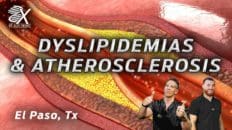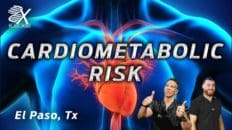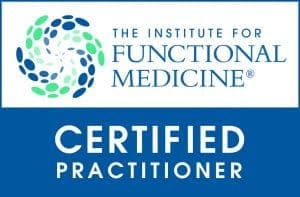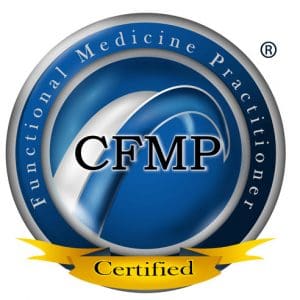Omega-3 polyunsaturated fatty acids (PUFA) are considered essential because our body cannot synthesize them. The two most common long-chain omega-3 acids are called eicosapentaenoic acid (EPA, 20:5, ω 3) and docosahexaenoic acid (DHA, 22:6, ω 3). In fact, numerous studies involving the function of omega-3 PUFA on conditions such as neurological diseases, inflammatory derangements, and cardiometabolic issues have been published. However, despite EPA and DHA being commonly associated with anti-inflammatory properties and beneficial effects, they are now showing controversial commentaries.
Omega-3 History
Indeed, the beneficial effect of omega-3 PUFAs arose in the 1970s, when an association of increased fish consumption of Inuits in Greenland contributed to lower myocardial infarction rates compared with Western countries. Nowadays, they are about 250 clinical trials involving the i
Omega-3 polyunsaturated fatty acids (PUFA) are considered essential because our body cannot synthesize them. The two most common long-chain omega-3 acids are called eicosapentaenoic acid (EPA, 20:5, ω 3) and docosahexaenoic acid (DHA, 22:6, ω 3). In fact, numerous studies involving the function of omega-3 PUFA on conditions such as neurological diseases, inflammatory derangements, and cardiometabolic issues have been published. However, despite EPA and DHA being commonly associated with anti-inflammatory properties and beneficial effects, they are now showing controversial commentaries.
Table of Contents
Omega-3 History
Indeed, the beneficial effect of omega-3 PUFAs arose in the 1970s, when an association of increased fish consumption of Inuits in Greenland contributed to lower myocardial infarction rates compared with Western countries. Nowadays, they are about 250 clinical trials involving the ingestion or supplementation of omega-3 PUFAs and diseases such as metabolic syndrome, dyslipidemia, inflammation, hypertension, parenteral nutrition in the critically ill patient, and cardiovascular disease.
As mentioned before, the research history is not currently recommending the supplementation of omega-3 PUFAs as part of the treatment to reduce the risk of secondary events of CHD. In a previous report published by de Longeri et al., a punctual glimpse of the history of randomized controlled trials (RCTs) involving omega-3 and CVD revealed important information.
This publication mentioned that current RCTs are not recommending Omega-3 supplementation because patients are being treated with statins. Indeed, the cornerstone of CVD’s treatment is statin use to reduce the risk and prevent CVD, CHD, and secondary events. However, these authors ensure that current (2005) RCTs comparing the effectiveness of omega-3 v. statins are not long enough. They did not consider the baseline omega-3 status and that most of these patients are already taking statins.
Consequently, the authors recommend that all of the clinical trials that do not support the use of omega-3 polyunsaturated fatty acids as a protective agent against CVD should be considered individually with precaution. As well as looking for limitations in each trial, such as a short follow-up, small sample size, and heterogeneity of the considered population.
Also, we have to consider the publicity that large trials get and the American Heart Association guidelines and the time period these RCTs were published. For example, the DART and GISSI studies were published between 1980 and 19990, during the pre-statin period. Furthermore, these two studies supported the use of omega-3 fatty acids. The Lyon Diet Heart Study recommended the supplementation of omega-3 Alpha-linoleic acid, as a precursor of EPA and DHA, and linked it to reducing CHD complications and mortality.
Shortly after the publication of these studies, in 2002, the AHA stated that the consumption of fish twice a week and 1g of EPA+DHA are preventive recommendations to reduce CVD risk. Therefore, in recent studies (2005), patients have higher baseline omega-3 dietary and blood measurements, and they are taking statins in contrast to the first RCTs made with an omega-3 deficient population.
Other applications of Omega-3 Fatty Acids
Several review studies still suggest that, despite the aforementioned information, omega-3 supplementation and higher fish consumption are associated with reduced triglyceride levels and lessen heart susceptibility to arrhythmias.
Inflammation and Omega-3
Also, the supplementation of omega-3 fatty acids has effectively reduced muscular rigidity and neurological symptoms of patients diagnosed with Parkinson’s disease. In fact, the underlying function of omega-3 relies on its ability to increase peroxisome proliferation activator receptor gamma (PPAR-y) gene activity. Consequently, this activation may cause an improvement in lipid and insulin metabolism. This adds to the fact that omega-3 is a potent neural protective agent.
Besides this, DHA is the precursor of Neuroprotectin D1 (NPD1), a signaling molecule that protects neurons by modulating genes’ actions in the retina and brain. In Alzheimer’s disease, neuroinflammatory damage causes deleterious effects on the dendritic spines, affecting electrical signaling. NPD1 can downregulate the inflammatory response and promote cell survival. Also, NPD1 can reduce the size of stroke damage.
In the fetus, omega-3 fatty acids are needed for the baby’s nervous system development. Besides this, in maternal milk omega-3, fatty acids depend on the amount of the mother’s dietary intake of these compounds. An appropriate amount of omega-3 PUFA is associated with good visual development, higher birth weight, and a reduction in postpartum depression.
After reviewing this information, something is clear, omega-3 fatty acids are linked with better health outcomes. It has been said before, the underlying action of why omega-3 can promote these effects has to be studied more deeply. However, the theory lies in the fact that omega-3 is an inflammation promoter. It contains proinflammatory leukotrienes that are used as a substrate by COX enzymes. Luckily, EPA and DHA have shallow proinflammatory action, and instead of promoting an exacerbated inflammatory response, they cause a weak response or “anti-inflammatory†effect. – Ana Paola RodrÃguez Arciniega, MS
References
Tiwari, Archana et al. “Therapeutic attributes and applied aspects of biological macromolecules (polypeptides, fucoxanthin, sterols, fatty acids, polysaccharides, and polyphenols) from diatoms – A review.â€Â International journal of biological macromolecules vol. 171 (2021): 398-413. doi:10.1016/j.ijbiomac.2020.12.219
de Lorgeril, M., Salen, P., Defaye, P. et al. Recent findings on the health effects of omega-3 fatty acids and statins, and their interactions: do statins inhibit omega-3?. BMC Med 11, 5 (2013). https://doi.org/10.1186/1741-7015-11-5
Additional Online Links & Resources (Available 24/7)


Online Appointments or Consultations:Â https://bit.ly/Book-Online-Appointment
Online Physical Injury / Accident Intake Form: https://bit.ly/Fill-Out-Your-Online-History
Online Functional Medicine Assessment: https://bit.ly/functionmed
Disclaimer
The information herein is not intended to replace a one-on-one relationship with a qualified health care professional, licensed physician, and not medical advice. We encourage you to make your own health care decisions based on your research and partnership with a qualified health care professional. Our information scope is limited to chiropractic, musculoskeletal, physical medicines, wellness, sensitive health issues, functional medicine articles, topics, and discussions. We provide and present clinical collaboration with specialists from a wide array of disciplines. Each specialist is governed by their professional scope of practice and their jurisdiction of licensure. We use functional health & wellness protocols to treat and support care for the musculoskeletal system’s injuries or disorders. Our videos, posts, topics, subjects, and insights cover clinical matters, issues, and topics that relate to and support, directly or indirectly, our clinical scope of practice.* Our office has made a reasonable attempt to provide supportive citations and has identified the relevant research study or studies supporting our posts. We provide copies of supporting research studies available to regulatory boards and the public upon request. We understand that we cover matters that require an additional explanation of how it may assist in a particular care plan or treatment protocol; therefore, to further discuss the subject matter above, please feel free to ask Dr. Alex Jimenez or contact us 915-850-0900.  Read More…
Dr. Alex Jimenez DC, MSACP, CCST, IFMCP*, CIFM*, CTG*
General Disclaimer
Professional Scope of Practice *
The information herein on "The History Behind Omega-3 vs. Statins" is not intended to replace a one-on-one relationship with a qualified health care professional or licensed physician and is not medical advice. We encourage you to make healthcare decisions based on your research and partnership with a qualified healthcare professional.
Blog Information & Scope Discussions
Welcome to El Paso's Premier Wellness and Injury Care Clinic & Wellness Blog, where Dr. Alex Jimenez, DC, FNP-C, a Multi-State board-certified Family Practice Nurse Practitioner (FNP-BC) and Chiropractor (DC), presents insights on how our multidisciplinary team is dedicated to holistic healing and personalized care. Our practice aligns with evidence-based treatment protocols inspired by integrative medicine principles, similar to those found on this site and our family practice-based chiromed.com site, focusing on restoring health naturally for patients of all ages.
Our areas of multidisciplinary practice include Wellness & Nutrition, Chronic Pain, Personal Injury, Auto Accident Care, Work Injuries, Back Injury, Low Back Pain, Neck Pain, Migraine Headaches, Sports Injuries, Severe Sciatica, Scoliosis, Complex Herniated Discs, Fibromyalgia, Chronic Pain, Complex Injuries, Stress Management, Functional Medicine Treatments, and in-scope care protocols.
Our information scope is multidisciplinary, focusing on musculoskeletal and physical medicine, wellness, contributing etiological viscerosomatic disturbances within clinical presentations, associated somato-visceral reflex clinical dynamics, subluxation complexes, sensitive health issues, and functional medicine articles, topics, and discussions.
We provide and present clinical collaboration with specialists from various disciplines. Each specialist is governed by their professional scope of practice and their jurisdiction of licensure. We use functional health & wellness protocols to treat and support care for musculoskeletal injuries or disorders.
Our videos, posts, topics, and insights address clinical matters and issues that are directly or indirectly related to our clinical scope of practice.
Our office has made a reasonable effort to provide supportive citations and has identified relevant research studies that support our posts. We provide copies of supporting research studies upon request to regulatory boards and the public.
We understand that we cover matters that require an additional explanation of how they may assist in a particular care plan or treatment protocol; therefore, to discuss the subject matter above further, please feel free to ask Dr. Alex Jimenez, DC, APRN, FNP-BC, or contact us at 915-850-0900.
We are here to help you and your family.
Blessings
Dr. Alex Jimenez DC, MSACP, APRN, FNP-BC*, CCST, IFMCP, CFMP, ATN
email: coach@elpasofunctionalmedicine.com
Multidisciplinary Licensing & Board Certifications:
Licensed as a Doctor of Chiropractic (DC) in Texas & New Mexico*
Texas DC License #: TX5807, Verified: TX5807
New Mexico DC License #: NM-DC2182, Verified: NM-DC2182
Multi-State Advanced Practice Registered Nurse (APRN*) in Texas & Multistate
Multistate Compact RN License by Endorsement (42 States)
Texas APRN License #: 1191402, Verified: 1191402 *
Florida APRN License #: 11043890, Verified: APRN11043890 *
* Prescriptive Authority Authorized
ANCC FNP-BC: Board Certified Nurse Practitioner*
Compact Status: Multi-State License: Authorized to Practice in 40 States*
Graduate with Honors: ICHS: MSN-FNP (Family Nurse Practitioner Program)
Degree Granted. Master's in Family Practice MSN Diploma (Cum Laude)
Dr. Alex Jimenez, DC, APRN, FNP-BC*, CFMP, IFMCP, ATN, CCST
My Digital Business Card
RN: Registered Nurse
APRNP: Advanced Practice Registered Nurse
FNP: Family Practice Specialization
DC: Doctor of Chiropractic
CFMP: Certified Functional Medicine Provider
MSN-FNP: Master of Science in Family Practice Medicine
MSACP: Master of Science in Advanced Clinical Practice
IFMCP: Institute of Functional Medicine
CCST: Certified Chiropractic Spinal Trauma
ATN: Advanced Translational Neutrogenomics




















